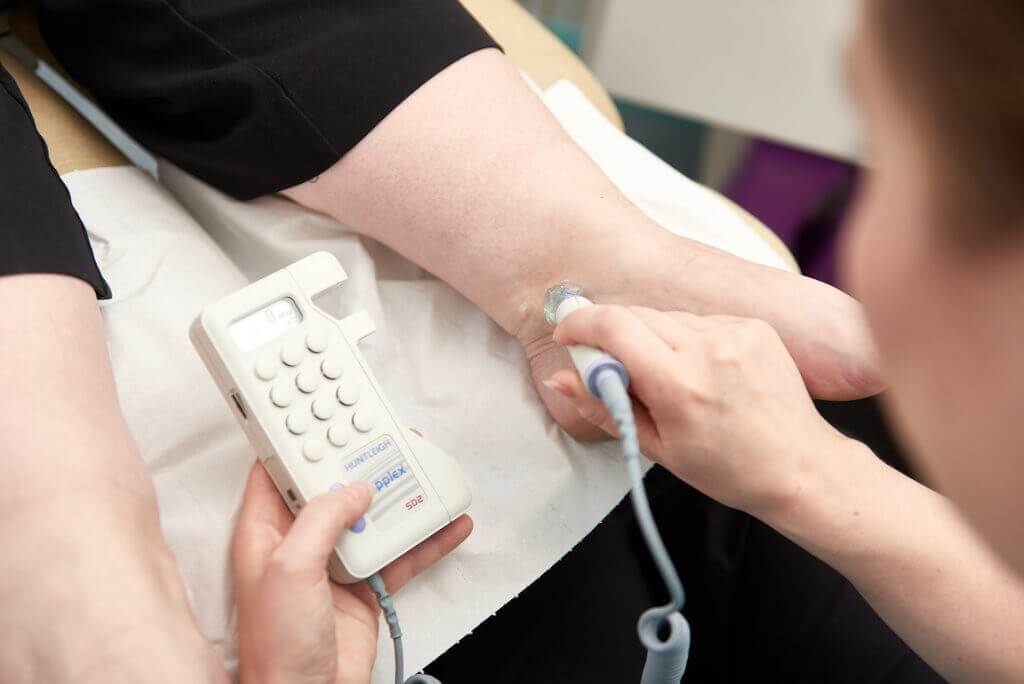
Circulation Problems And Your Feet
As podiatrists, one of the things that we're trained to look at when we're checking your feet, is your circulation.
This month's blog will focus on circulation problems. Your circulation can be divided into two main categories, the macrovascular and the microvascular. Your macrovascular circulation is the main blood vessels that run from your heart down to your feet, and your microvascular circulation is the small capillaries that sit just underneath the skin surface.
If your main arteries are damaged, (your macrovascular circulation), then it can lead to problems with your feet. You can get symptoms like pain in the calf muscle and the thigh muscle when you're walking, and in severe cases, it can cause you pain at night when you're trying to sleep.
When you come in for an appointment with a Podiatrist, we will always check over your skin and your nails, quite often without you even noticing that that's what we're doing. We'll look at the skin temperature as well when we're feeling your feet, to see if the digits are cold. If we have any concerns about your circulation, then we can use a Doppler to have a listen to the pulse in your feet.
In our foot and ankle clinic, anyone who comes in for a new patient appointment who is over the age of 50, we will automatically check their circulation with a Doppler. If there's anyone younger than 50 that we have concerns about regarding the circulation, we will also check. Risk factors to your circulation being damaged are age, diabetes, smoking, cholesterol, high blood pressure. So if there are any of these in your medical history, then that will prompt us to check your circulation.
Why do we use a Doppler?
What we're listening for with a Doppler is the number of sounds that we can hear in your pulse. It gives us an idea of the amount of blood that's flowing down to your feet, and of the quality of your pulse. But also when we're listening to it, we can pick up any irregularities in the heartbeat. Some people have conditions such as atrial fibrillation, which is an irregular heartbeat, and this can be a risk factor to strokes. So if we pick up any irregularities in your pulse, we have a Kardia machine, which is a little sensor that you place your thumbs on, and we can do a quick trace of your heart rate, and if there are any concerns, we can email a copy of that trace through to your GP and ask them to investigate further.
With the microvascular circulation, the small capillaries that sit near the skin surface, we're getting to the time of year now where the weather's starting to change and it's getting a little bit colder. In some people that have conditions like Raynauds, the capillaries will shut down in response to the cold, and the fingers and toes might go white, and then when the blood flow returns, when they warm up again, they'll go quite purpley and maybe be painful and itch. We've got a blog about Raynauds on our website from February, so if you want to know more about that condition, and chilblains which can be associated with Raynauds, then please do have a read, there's lots of good information on there.
If you have any concerns about your circulation, please don't hesitate to see a podiatrist. We can check things over for you and set your mind at rest or refer on to your GP or to the hospital if we have any particular concerns.
For more information on what we can do once we've done your doppler assessment - read more here
Anna Conway
BSc (Hons), MCPod, SRCh, PGcert Podiatry
Owner, Lead Podiatrist


[…] feet to check for damage to blood vessels that may reduce circulation (see our blog on this here – https://roundhousepodiatry.com/circulation/circulation-problems-and-your-feet/ ) (it can also help us detect irregular heart rhythms which can be a risk for strokes). We use a […]
[…] Circulation Problems And Your Feet […]